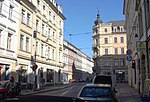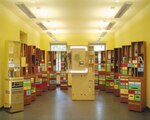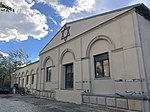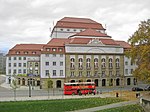Dresden Bischofsplatz station
Dresden S-Bahn stationsGerman railway station stubsRailway stations in DresdenRailway stations in Germany opened in 2016

Dresden Bischofsplatz station (German: Bahnhof Dresden Bischofsplatz) is a railway station in the town of Dresden, Saxony, Germany. The station is located on the Pirna–Coswig railway.
Excerpt from the Wikipedia article Dresden Bischofsplatz station (License: CC BY-SA 3.0, Authors, Images).Dresden Bischofsplatz station
Bischofsplatz, Dresden Leipziger Vorstadt (Neustadt)
Geographical coordinates (GPS) Address Nearby Places Show on map
Geographical coordinates (GPS)
| Latitude | Longitude |
|---|---|
| N 51.0723 ° | E 13.7464 ° |
Address
Dresden Bischofsplatz
Bischofsplatz
01097 Dresden, Leipziger Vorstadt (Neustadt)
Saxony, Germany
Open on Google Maps










